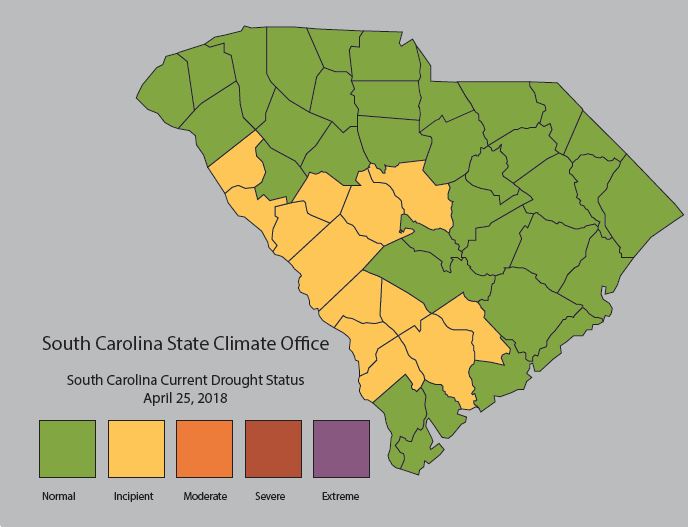Local drought management efforts change in response to changing weather conditions, and not all plans work for each season. Keeping the public involved and informed in the decision-making process is key to implementing an effective drought management plan.

The S.C. Drought Response Act of 2000 requires that all water utility providers adopt a local drought management plan that addresses how water would be conserved during certain stages of drought — incipient, moderate, severe and extreme.
The Drought Response Committee of state and local representatives from the state's four drought management zones periodically coordinates responses to water supply shortages. The committee decides if there is any level of drought in the state by reviewing average temperatures; precipitation; crop moisture index; future weather forecasts; and river flow, lake and groundwater levels.
The S.C. Climatology Office recommends officials undertake predrought planning efforts. Some preresponse measures aimed at conserving the system's source water include
- Identifying all major water users of the system (the top 10 percent heaviest users, including wholesale customers).
- Identifying water users with whom there are conservation agreements.
- Conducting a vigorous public education program. An effective public outreach program will keep the public informed about the water supply situation, what actions will mitigate drought emergency problems, and how well the public is meeting the program goals.
Refer to the S.C. Department of Natural Resources' local ordinance or plan for a more complete list of management practices and conservations measures. A model ordinance is also available.
